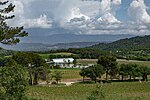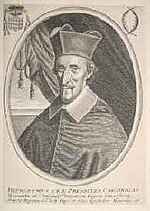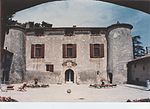Chateau La Coste / Villa La Coste
Châteaux in Provence-Alpes-Côte d'AzurContemporary art exhibitionsContemporary works of artEuropean hotel stubsFrench building and structure stubs ... and 8 more
Hotels in FranceInstallation art worksLuxury hotelsProvence-Alpes-Côte d'Azur geography stubsSculpture exhibitionsSculpture galleries in FranceSculpture gardens, trails and parks in FranceSteel sculptures
Chateau La Coste is a 600-acre sculpture park, art destination and organic winery in Provence. The property includes Villa La Coste a luxury hotel. The sculpture park contains art and architecture by Tadao Ando, Louise Bourgeois, Bob Dylan, Tracey Emin, André Fu, Frank Gehry, Andy Goldsworthy, Christopher Green, Kengo Kuma, Paul Matisse, Oscar Niemeyer, Jean Nouvel, Renzo Piano, Richard Rogers, Richard Serra, Conrad Shawcross, Lee Ufan, Ai Weiwei and Franz West. Irish property magnate Paddy McKillen is the estate owner and project manager of the hotel. Wine varietals of the estate include Syrah, Cabernet Sauvignon and Vermentino.
Excerpt from the Wikipedia article Chateau La Coste / Villa La Coste (License: CC BY-SA 3.0, Authors).Chateau La Coste / Villa La Coste
Route de la Cride, Aix-en-Provence
Geographical coordinates (GPS) Address Nearby Places Show on map
Geographical coordinates (GPS)
| Latitude | Longitude |
|---|---|
| N 43.6359 ° | E 5.4198 ° |
Address
Route de la Cride
13610 Aix-en-Provence
Provence-Alpes-Côte d'Azur, France
Open on Google Maps







